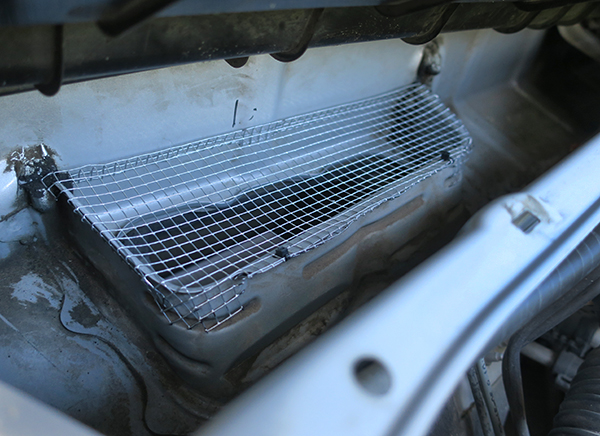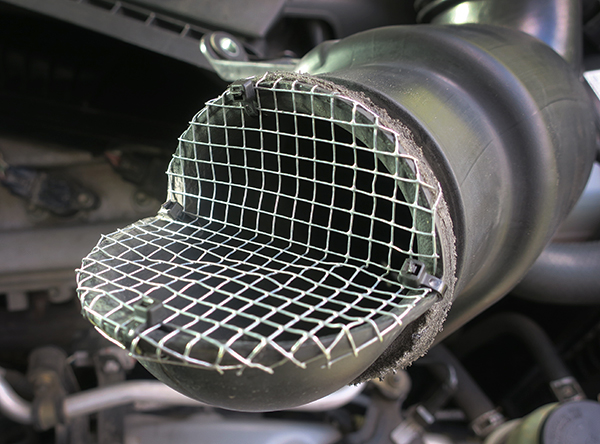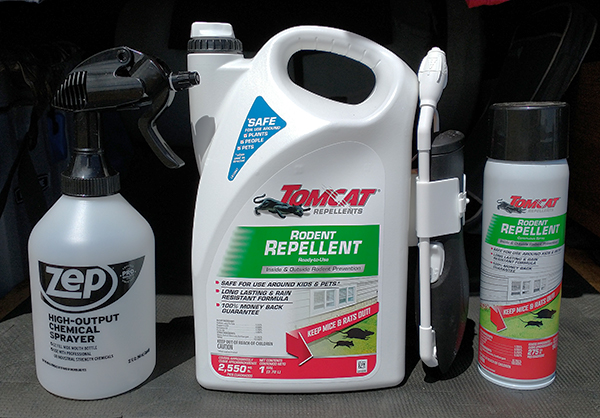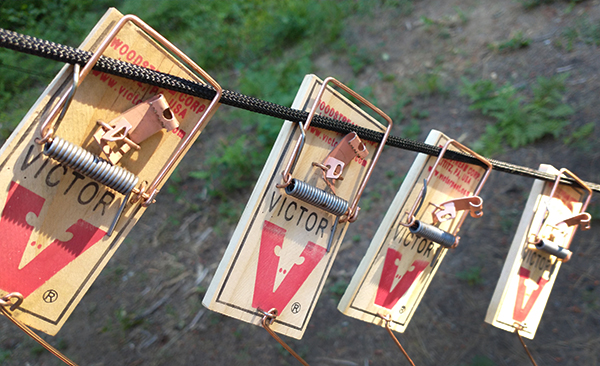We travel to a lot of remote places here at watermanatwork.com and we see a lot of wildlife. One animal we are not that stoked to come in contact with are mice, field mice. They usually come out at night looking for food and will eat through just about anything to get to it. If there is no food, they will eat plastic, fabric and insulation of your vehicle. They will also eat through the electrical wiring and cause hundreds, if not thousands of dollars in damage.
Over the years, we’ve learned our lessons about mice and other small rodents, this post describes some of the things we do to keep mice out of our vehicles. We wrote an earlier blog post about keeping mice out of my Tacoma pickup truck. Every vehicle is different, but cabin vents and the air intake are common to almost every vehicle. Find these openings and screen them off as described in the blog post.


Screening off your vehicle air intake openings goes a long way to keeping mice out of your vehicles, but there are more things to do to keep mice out of your vehicle.
The most important thing you can do to keep mice out of your vehicle, and anywhere else you keep food, is to keep all food in mouse proof containers. Don’t leave any food of any kind in your vehicle while in mouse country. Every speck of food must be in mouse proof containers like plastic bins or boxes. Close the doors of your vehicle immediately. Leave the doors open, sooner or later a mouse will jump in. Don’t leave empty food wrappers or containers in your vehicle or living space. A couple crumbs is a feast to a mouse and they’ll chew through just about anything to get it.
Something we started to use a couple years ago also seems to help is the use of mouse repellent. These mouse repellents are made from peppermint and garlic oil that mice do not like. We’ve been using Tomcat Rodent Repellent, available at Home Depot. We buy the gallon jug and use a sprayer because it’s more economical and the spray bottle has good control over where the repellent is sprayed.
We usually spray around the wheel wells and entry points to the engine compartment. In the engine compartment, look for mouse droppings and spray along the way. Spray anywhere you think mice may be getting in.

Of course, different situations are going to have different results. If you have a rodent infestation and they are starving to death, this stuff probably won’t have much effect. If you are camping in a wild area with mice and your food is in mouse proof containers, repellent seems to discourage mice from eating your things. It doesn’t stop mice completely, but judging by what the mice leave behind, it seems to cause them gastric distress and they forget about chewing up your vehicle. We have found that the Tomcat Rodent Repellent is effective for five to six days with dry conditions.
Sooner or later, a mouse may get into your vehicle despite all the anti rodent efforts. You can tell by chewed up things and telltale mouse droppings that you have an unwanted guest. If that’s the case, you need to get rid of the mouse as soon as possible before it makes itself at home. Put standard mouse traps around the interior of your vehicle at night. Peanut butter makes pretty good bait. Make sure there is nothing else to eat except that peanut butter. Keep trapping until you get all of them and the mouse droppings stop appearing.

We’re sure there are other ways that may help keep mice out of your vehicle like flashing lights and high frequency sound, but these simple things do a pretty good job pretty cheaply.
We here at watermanatwork.com are not sponsored by any mouse trap or repellent companies and there is no affiliate advertising. We buy the stuff just like you so the information here is pretty much the way it is.
